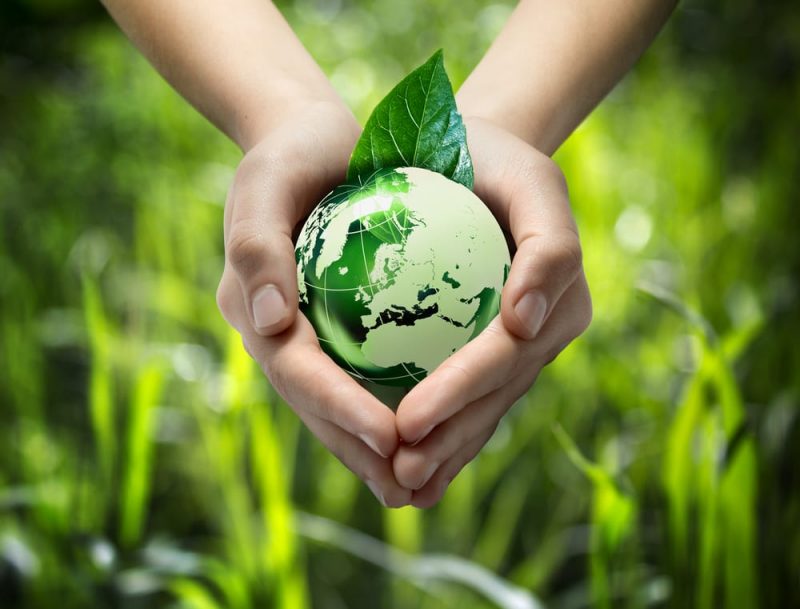The sustainable use of resources refers to the ability to make use of natural resources without causing greater damage to nature, and to the ability to reproduce and resupply of these resources over time. For instance: recycling of industrial waste, short showers, rechargeable batteries.
The idea of sustainability It implies the strong moral principle that human well-being must necessarily be sought within the capacity of the natural environment to sustain it, so that economic growth and technological development to improve people’s living conditions should face certain physical limitations: the exponential evolution of these two issues in recent years makes it seem difficult to think that this maelstrom would stop for some reason.
There is, however, no intrinsic relationship between the sustainable use of resources and limiting progress. In any case, it may happen that as the human population increases, the pressure on ecosystems grows due to the increased extraction of resources.

Most of the organizations that promote sustainable use affirm that it is possible to generate a economic development consistent with caring for the environment: activities related to organic agriculture, environmental impact assessments, certification and eco-labeling, fishing quotas, protected areas, and the reduction of fires in the bush.
However, there are also times when the use of natural resources can be made of different modes, the least sustainable being those that have the least fixed and variable costs. The usual conflicts regarding the indiscriminate use of non-renewable energy sources, as well as the typical confrontations over mining extraction conditions are part of the conflictive cases.
This contradiction can often be overcome by means of the State intervention subsidizing certain more sustainable activities, but when the businesses are so big it is possible that their action is limited.

Examples of sustainable uses
The following list includes some examples of activities that involve the sustainable use of natural resources, both individually and in organizations. In addition, in some cases the effect sought through its implementation will be detailed:
- Recycling of industrial waste. This frees up a very large space in sanitary landfills, in addition to incorporating tons of raw materials for recycling into the production cycle.
- Use of Digital Fax or digital media. This reduces to almost 0 the use of paper and ink for printing that was used before.
- Short showers. Do not spend too much time in the shower, a significant amount of water is used at that time. (Sustainable use of water)
- Promote intergenerational solidarity education. It encompasses all the points, but from education the treatment of waste should be thought of as an activity of greater or lesser solidarity.
- Rechargeable batteries. Batteries are one of the products that take the longest time to degrade.
- Reduction of intensive agriculture. Substitute production subsidies for acreage support: thus, the incentive for intensification is removed.
- Water consumption meters. Install meters that quantify water consumption in the different productive areas where it is used. (Sustainable uses of water)
- Zero credits to polluting companies. Eliminate credits to companies that cannot ensure the zero environmental and social impact of their projects, local or international.
- Develop less waste-generating technologies.
- Restructure the public space. In this way, pedestrian and cyclist mobility can be favored.
- Electronic account statements. It also strongly reduces paper consumption.
- Eliminate direct subsidies for the use and development of fossil fuels. It is common for states to do so, and this goes against the push for sustainable methods.
- Turn off unnecessary lights. Take advantage of natural light as much as possible, solar energy panels are essential for these purposes.
- Protect watersheds and water resources. This includes both surface and underground.
- Investment in less polluting means of transport. Conventional trains are more sustainable than high-speed trains.
- Promote the protection of a part of the land and sea surface. Political jurisdictions may have an obligation not to use certain lands productively.
- Avoid over-exploitation of soils. Respecting the rest cycles that they must have, for a sustainability of the activity and the soils. (Sustainable land use)
- Control water consumption in irrigation. A lot of fresh water is wasted in this activity. Drip irrigation is positive in this regard.
- Reduce consumption and regulate the production of products with toxic substances. Insecticides, disinfectants, some cleaning products.
- Use light bulbs of low consumption. In the world the use of these lamps is spreading, much more sustainable than the usual ones.
- Efficient public lighting. Establish public lighting strategies that limit energy waste.

